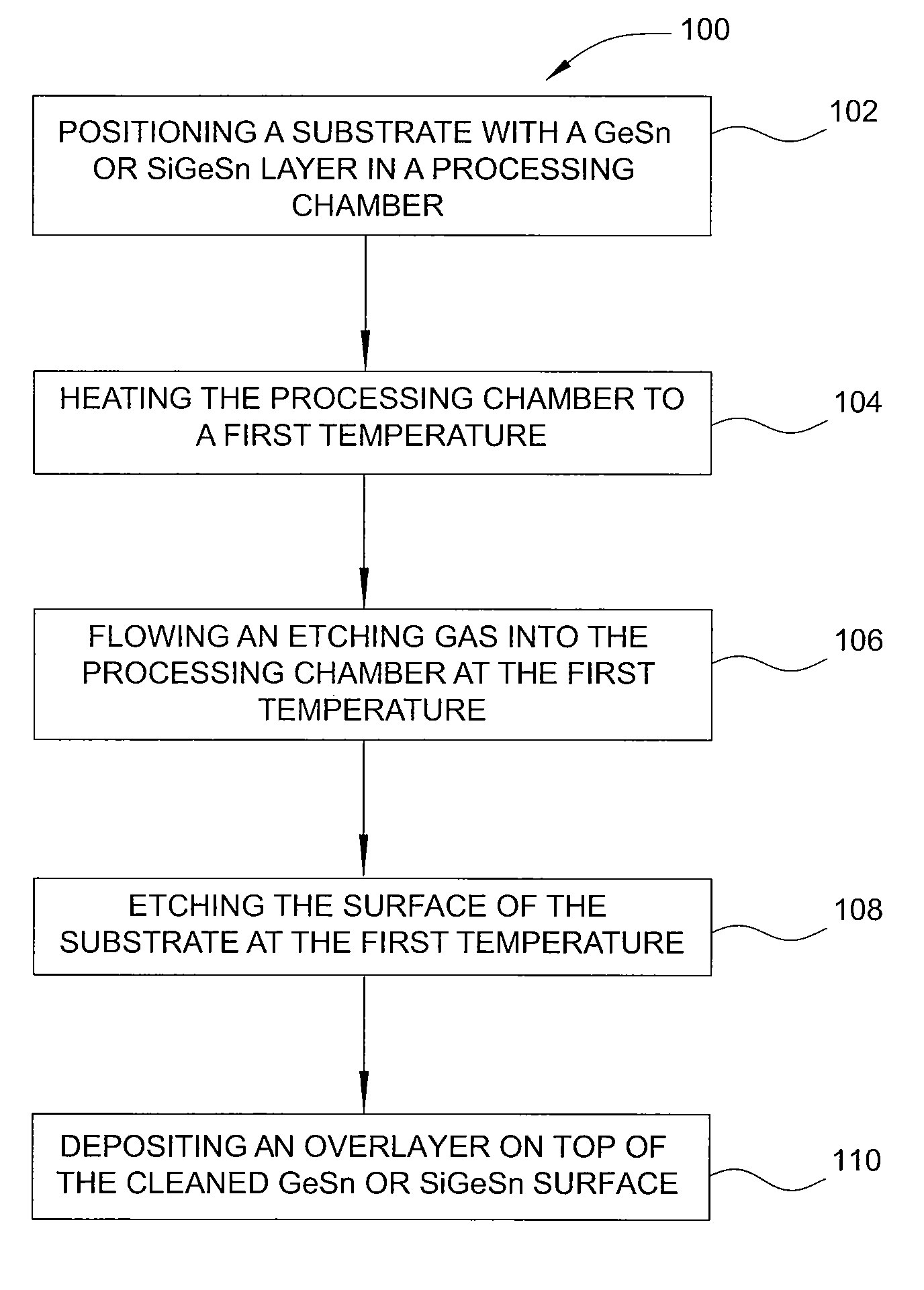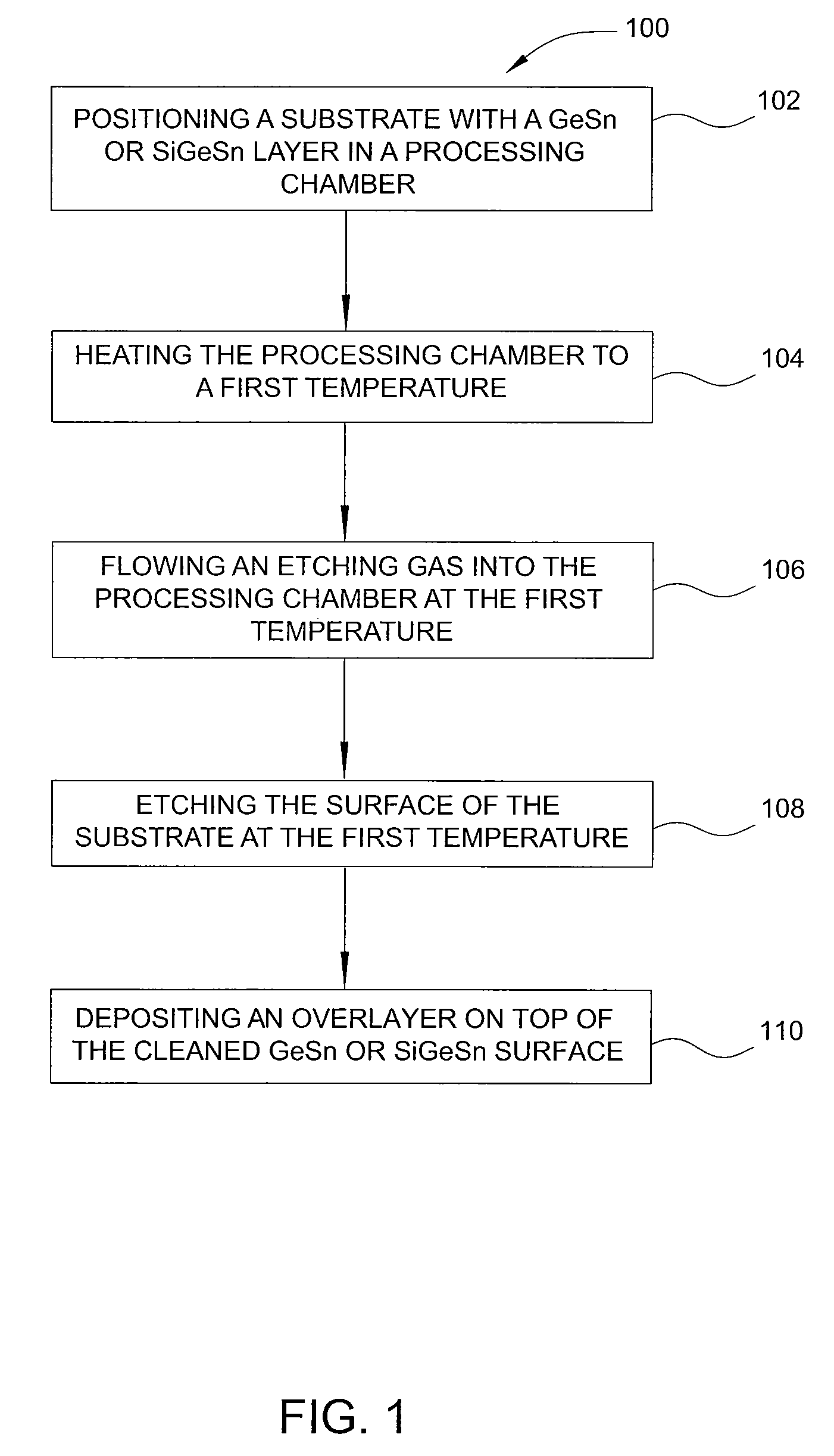Method of epitaxial germanium tin alloy surface preparation
a germanium tin alloy and surface preparation technology, applied in the direction of cleaning process and apparatus, cleaning using gases, chemical instruments and processes, etc., can solve the problems of less resistivity and higher threshold voltage, the size of transistor components is a challenge for engineers, and the electronic properties of the channel become less viabl
- Summary
- Abstract
- Description
- Claims
- Application Information
AI Technical Summary
Benefits of technology
Problems solved by technology
Method used
Image
Examples
Embodiment Construction
[0019]Methods for preparing the surface of germanium tin (GeSn) or silicon germanium tin (SiGeSn) layers for subsequent deposition are provided. The methods are described in more detail with reference to the figures below.
[0020]FIG. 1 is a flow diagram summarizing a method 100 according to one embodiment. A semiconductor substrate is positioned in a processing chamber at step 102. The semiconductor substrate may be any semiconductive material on which a stressor layer or an overlayer of any other function is to be formed. A silicon or germanium substrate on which a GeSn or SiGeSn layer is formed may be used in one example. The semiconductor substrate may have regions of oxide or surface contaminants formed on the GeSn or SiGeSn layer, which may be created at transfer steps between a vacuum environment and an ambient environment. For example, oxide may be formed and surface contaminants may be accumulated during the transfer steps between formation of a source / drain region and remova...
PUM
| Property | Measurement | Unit |
|---|---|---|
| temperature | aaaaa | aaaaa |
| temperature | aaaaa | aaaaa |
| temperature | aaaaa | aaaaa |
Abstract
Description
Claims
Application Information
 Login to View More
Login to View More - R&D
- Intellectual Property
- Life Sciences
- Materials
- Tech Scout
- Unparalleled Data Quality
- Higher Quality Content
- 60% Fewer Hallucinations
Browse by: Latest US Patents, China's latest patents, Technical Efficacy Thesaurus, Application Domain, Technology Topic, Popular Technical Reports.
© 2025 PatSnap. All rights reserved.Legal|Privacy policy|Modern Slavery Act Transparency Statement|Sitemap|About US| Contact US: help@patsnap.com



